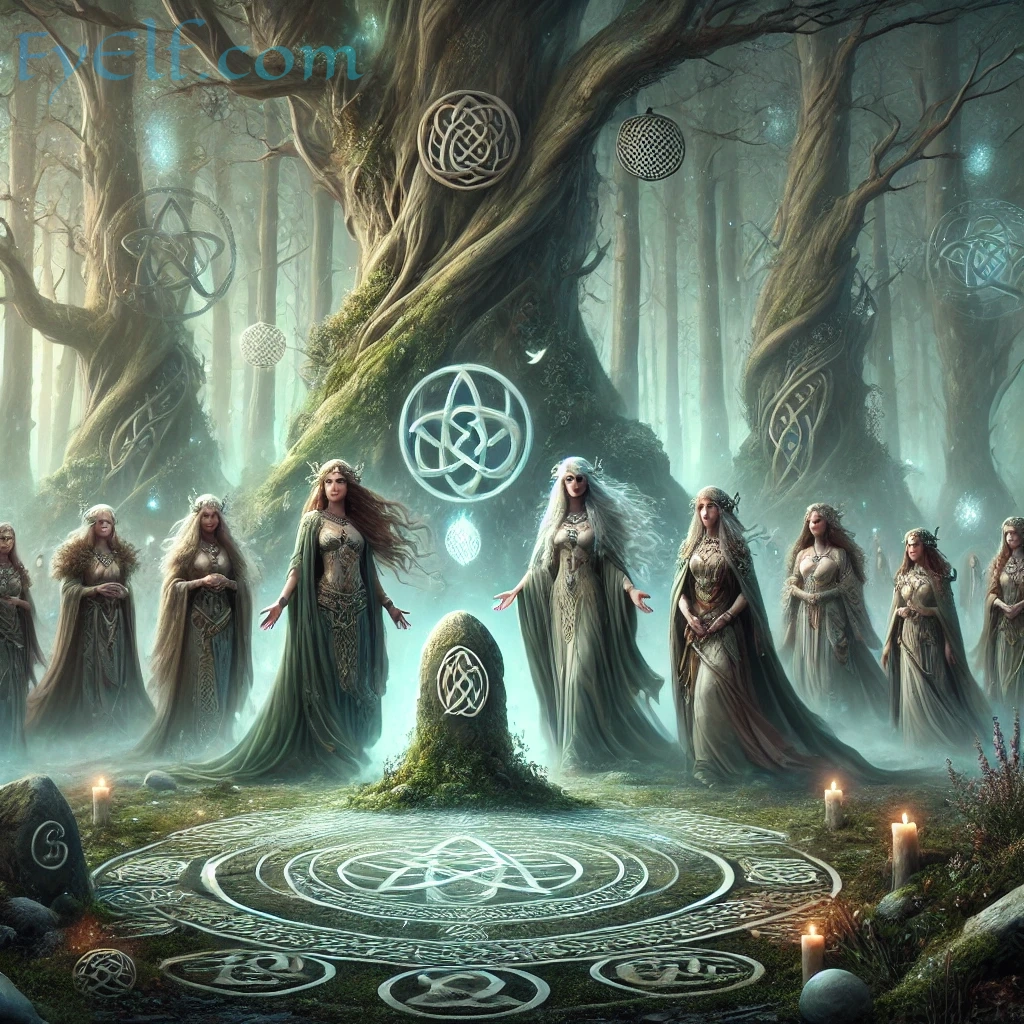Among the many figures of Slavic mythology, few are as captivating — or as unsettling — as the Rusalka. Often described as a beautiful maiden dwelling in rivers or lakes, the Rusalka embodies both the allure and the danger of water. While some tales present her as a playful spirit tied to fertility and seasonal renewal, others paint her as a vengeful ghost, luring the unwary to a watery death. This duality has made the Rusalka one of the most enduring and fascinating figures in Slavic folklore, inspiring poets, artists, and storytellers for centuries.
Origins of the Rusalka Myth
The roots of the Rusalka stretch deep into pagan Slavic traditions. In early agrarian societies, water was life itself — rivers and lakes nourished crops, sustained communities, and represented forces both creative and destructive. It was natural for myths to personify these waters in the form of spirits.
The Rusalka was initially connected with fertility rituals and seasonal cycles, particularly springtime festivals. She represented the abundance of water and vegetation, sometimes blessing fields with growth. However, as Christianity spread across Slavic lands, older deities and spirits were reinterpreted. The once life-giving Rusalka was increasingly depicted as a dangerous, even demonic figure — a restless soul tied to sin, death, or vengeance.
What Is a Rusalka?
In folklore, a Rusalka (plural: Rusalki) is a female spirit associated with water, often appearing as a young and strikingly beautiful woman. Despite her outward beauty, she carries a dangerous aura, able to ensnare men with her charm.
Descriptions vary by region:
- In Russia, Rusalki were often pale, with long loose hair, sometimes greenish or flowing like river weeds.
- In Ukraine, they could be dressed in white, symbolizing purity but also death, often appearing near rivers at night.
- In Belarus and Poland, they might take on more ghostly forms, resembling drowned women.
What unites these depictions is their connection to water, mystery, and transformation — qualities that make them simultaneously enchanting and threatening.
The Dual Nature of Rusalki
One of the most intriguing aspects of the Rusalka is her dual nature.
- As benevolent spirits: In some traditions, Rusalki were linked to fertility, ensuring crops grew and water flowed. They could dance in meadows and bring life to the natural world.
- As malevolent spirits: Other stories depict them as restless souls of young women who died prematurely — often through drowning, betrayal, or suicide. In this form, they were vengeful beings who lured men into the water, entangled them in their hair, and drowned them.
This duality reflects the ambivalent view of nature in Slavic folklore: water gives life, but it also takes it away.
Rusalki and Nature
The Rusalka is always bound to the natural environment, particularly rivers, lakes, and forests. They emerge most frequently in spring and early summer, when communities celebrated fertility festivals and honored the cycles of life.
Some traditions describe “Rusalka Week” (Rusal’naya Nedelya), a time when people believed the spirits were most active. During this period, villagers avoided swimming in rivers, fearing that Rusalki might drag them beneath the surface. At the same time, offerings such as bread, yarn, or flowers were left to appease the spirits and secure a bountiful harvest.
Rusalka vs. Mermaid
One of the most common misconceptions is equating the Rusalka with the mermaid. While both are water beings associated with beauty and danger, they are quite different:
- Mermaids are typically half-human, half-fish, with ancient roots in Greek and Middle Eastern mythology.
- Rusalki, by contrast, are fully human in appearance — they are spirits of women, not hybrid creatures. Their origins lie not in the sea, but in rivers, lakes, and wetlands of Eastern Europe.
The conflation of Rusalki with mermaids largely comes from later European literature and art, but in original folklore, they remain distinct beings.
Legends and Tales of the Rusalka
Slavic folklore is filled with chilling and mesmerizing stories of the Rusalka.
- In some Russian tales, a Rusalka sits by the riverbank, combing her long hair and singing softly. If a man approaches, she entices him closer — only for him to vanish beneath the waters forever.
- Ukrainian legends often tie Rusalki to the spirits of drowned maidens, betrayed by lovers or mistreated by families. They return to haunt riversides, their songs both beautiful and deadly.
- In Polish traditions, the Rusalka is more explicitly demonic, seen as a punishment for sins, her fate serving as a warning to the living.
These tales reflect both the fragility of life and the fear of untamed waters in pre-modern societies.
Symbolism of the Rusalka
The Rusalka is rich in symbolism, embodying multiple themes that were central to Slavic life and worldview:
- Love and Betrayal: Many Rusalki are said to be the souls of betrayed women, their vengeance fueled by broken promises.
- Life and Death: They represent both fertility (watering fields) and mortality (drowning victims).
- Feminine Power: The Rusalka channels fears and admiration of female sexuality, autonomy, and danger.
In this sense, Rusalki are archetypal figures — like sirens or banshees — that speak to universal human anxieties.
The Rusalka in Art and Literature
The allure of the Rusalka has long inspired artists.
- Literature: Alexander Pushkin’s unfinished play Rusalka (1832) explores the tragic tale of a betrayed maiden turned into a water spirit.
- Opera: Antonín Dvořák’s opera Rusalka (1901) immortalized the figure in Western culture, with the famous aria “Song to the Moon.”
- Visual Arts: Russian painters of the 19th century often depicted Rusalki as hauntingly beautiful maidens among rivers and forests.
Through these works, the Rusalka transitioned from folk belief into a lasting cultural symbol.
Modern Representations of the Rusalka
Even today, the Rusalka continues to appear in popular culture. She surfaces in:
- Fantasy novels that reinterpret Slavic myths.
- Films and television, often as a mysterious or tragic figure.
- Video games, where she may appear as an enemy spirit or enchanting character.
These modern adaptations show how folklore evolves — the Rusalka is not a relic of the past, but a living myth that continues to inspire.
Connections to Other Mythical Beings
The Rusalka belongs to a broader family of water spirits across cultures:
- Greek Naiads, freshwater nymphs tied to rivers and fountains.
- Celtic Selkies, beings who transform from seals into humans.
- Germanic Lorelei, a siren-like figure luring men with her song.
By comparing Rusalki with these figures, we see the universality of water spirit myths — reflections of human awe and fear toward the power of water.
Why the Rusalka Still Captivates Us
The Rusalka endures because she is more than just a myth. She personifies the mysteries of water, the fragility of life, and the power of untold stories. She is at once beautiful and terrifying, nurturing and destructive.
In Slavic folklore, Rusalki remind us that myths are not simply entertainment; they are expressions of cultural fears, hopes, and values. And in today’s world, their haunting beauty ensures that these water spirits of Slavic mythology will never be forgotten.




